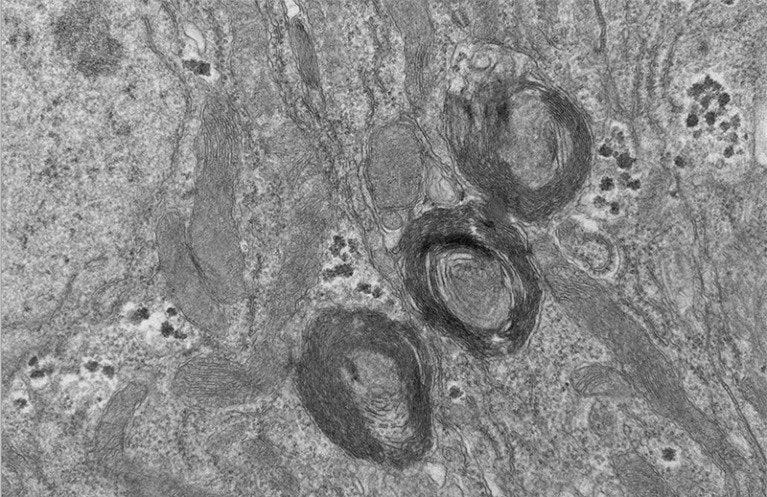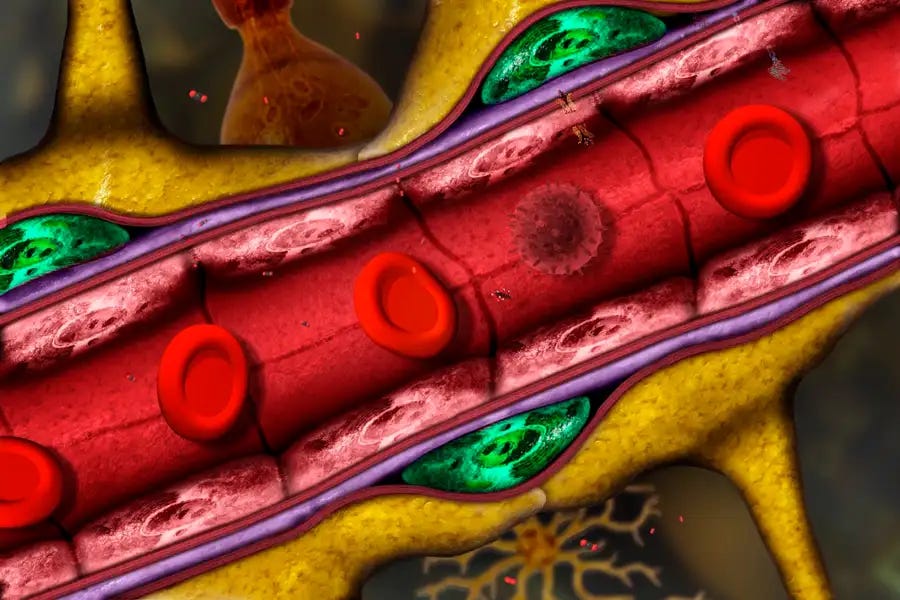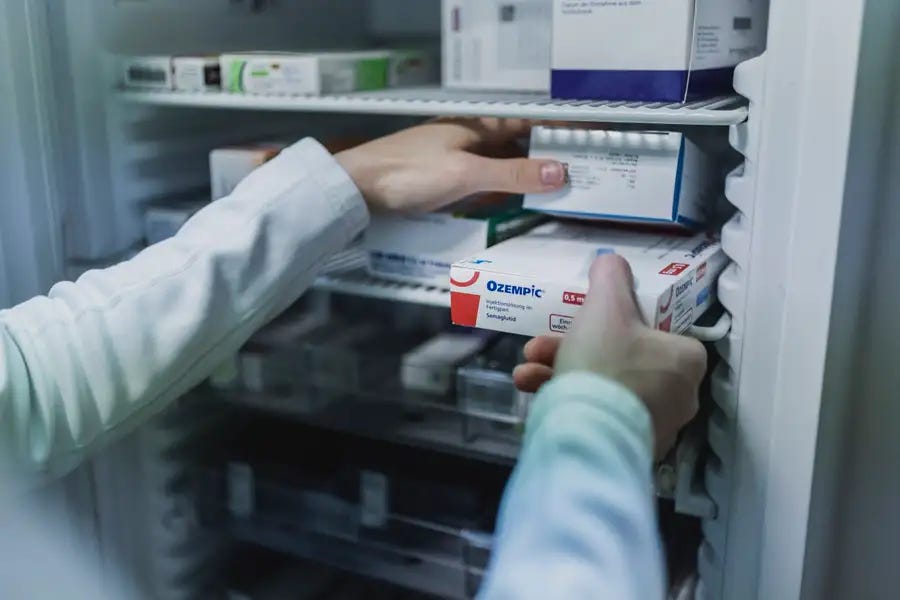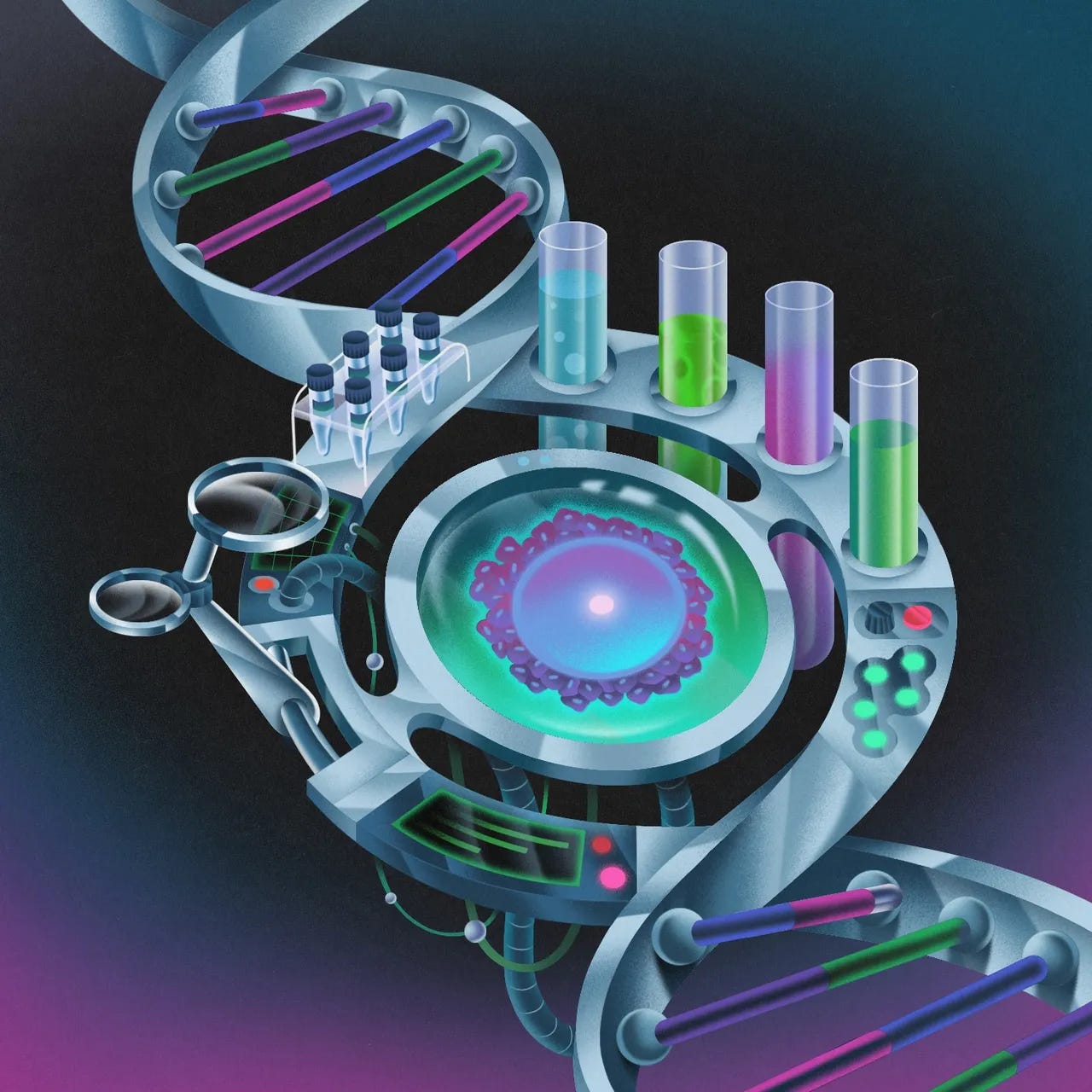Sci-Ed Update 267
Music numbs pain, Viral entry into cell, Phosphate organelle discovered, Why humans have crooked teeth, Future of fertility, Using ultrasound to cross the BBB, How DM/wgt-loss drugs work, Cell talk
Why does music numb physical pain? Scientists uncover clues.
Music and sounds only seem to reduce pain in mice when played at a specific volume.
For over 80 years, music has been known to have a broad range of pain-numbing properties; however, it is unclear how this happens.
A team of neuroscientists discovered that only soft sounds — about 5 decibels higher than ambient noise — reduce pain in mice.
The researchers also uncovered an unusual neural connection between the brain's auditory and pain-processing regions.
Read more→ AandP.info/91q
Stunning video captures a virus on the verge of breaking into a cell

The eerily random path of a virus poised to attack has been caught on video.
Using a new microscopy technique, researchers at Duke University in Durham, North Carolina have visualized a virus bouncing around the intestinal lining, looking for entry into a cell.
To use a home-invasion metaphor, the moment captured on video "would be the part where the burglar has not broken the window yet," Courtney "CJ" Johnson(opens in new tab), an associate at the Howard Hughes Medical Institute’s Janelia Research Campus in Ashburn, Virginia, who conducted the research while earning her doctorate at Duke, said in a statement(opens in new tab).
So far, the researchers can only track a viral particle for a few minutes before the fluorescent compound wears away and the particle goes invisible. It will take a tracking time of tens of minutes to follow a virus through the entire process of skimming, binding, and infecting a cell, the researchers reported Nov. 10 in the journal Nature Methods(opens in new tab). The researchers are working to develop brighter, longer-lasting tracking compounds so that they can image viruses in increasingly more realistic cellular environments over longer periods of time.
"This is the real promise of this method," Welsher said. "We think that's something we have the possibility to do now."
Read more→ AandP.info/fkv
New cellular 'organelle' discovered inside fruit fly intestines

Phosphate is essential to life. Now, researchers have discovered a tiny structure inside animal cells that acts like a reservoir of phosphate, helping to regulate levels of the nutrient inside cells and triggering processes that maintain tissues when it is in short supply1. The researchers classify the structure as a new type of organelle — fundamental structures in cells, such as the nucleus, mitochondria and the membrane, that function as miniature organs in its body.
“This is one of the first studies to actually find phosphate storage in an animal cell,” says Rebekka Wild, a structural biologist at the French national research agency CNRS in Grenoble, who was not involved in the research. “It’s really exciting.”
In plants, bacteria and yeast, phosphate is important for cell growth and helps cells to communicate and generate energy. Although it is known to be essential in animal tissues and cells, few studies had explored its specific functions. Charles Xu, a geneticist at the Rockefeller University in New York City, was curious about what part phosphate played in regulating tissue renewal in the fruit-fly gut, a useful model for studying how diseases affect cells in the human intestine. “That’s not really well known, especially in animal cells,” says Xu.
Read more→ https://aandp.info/2nt
Video breaks down why early humans had naturally straight teeth and we don't
The Future of Fertility
A new crop of biotech startups want to revolutionize human reproduction.
Much of the biology of female reproductive aging is still a black box: Garrison told me that we don’t know the timer or the cue that marks the beginning of reproductive decline, or why the age of menopause has so much individual variation. We have little sense of what aging in the ovaries means for aging in the rest of the body, even though early menopause is correlated with a shorter life span, not only for the woman experiencing it but for her brothers. There is currently no reliable biomarker that tells a woman how many eggs she has left.
Research into women’s health has historically been underfunded. Most of our contraceptives and fertility treatments were developed in the last century; there has been little innovation since the nineteen-eighties. Reproductive-health-care research has been further impeded by political controversies surrounding abortion, contraception, fetal tissue, and the “personhood” of embryos. Women were not required by law to be included in government-funded clinical research until 1993, and many drugs and dosages are still optimized for the male body. One 2021 study, “Gender Disparity in the Funding of Diseases by the U.S. National Institutes of Health,” which was published in the Journal of Women’s Health, found that, “in nearly three-quarters of the cases where a disease afflicts primarily one gender, the funding pattern favors males.”
Read more→ AandP.info/dx1
Ultrasound opens brain barrier so drugs can reach aggressive tumours
Penetrating the blood-brain barrier via pulses of ultrasound waves led to a three-fold increase in the concentration of a chemotherapy drug in people with the brain cancer glioblastoma multiforme

Ultrasound waves help to open up the blood-brain barrier, which could allow for more-targeted treatment of hard-to-reach brain tumours.
The blood-brain barrier (BBB) is made up of many cell types that help to shield the brain from toxic substances and microorganisms that may be circulating in the bloodstream. However, this roadblock can also prevent cancer drugs from reaching malignant cells in the brain.
Now, Adam Sonabend at Northwestern University, Illinois, and his colleagues have used low-intensity pulsed ultrasound to open the BBB of 17 people with recurrent glioblastoma multiforme (GBM), an aggressive brain tumour. Existing treatments focus on removing as much of the tumour as possible, followed by radiotherapy and use of the chemotherapy drug temozolomide, which can cross the BBB, but is weaker than some other anti-cancer drugs.
Read more→ AandP.info/iyx
The science of the weight loss and diabetes drugs Wegovy and Ozempic
The medicines, which contain the drug semaglutide, can help people who are obese or overweight to quickly lose weight, but some are concerned over their potential side effects

Ozempic and Wegovy are brand names for the drug semaglutide. Many countries have approved Wegovy for weight loss in people who are obese or overweight and Ozempic for people with type 2 diabetes.
How do these drugs work? Drugs such as semaglutide mimic the actions of a hormone called glucagon-like peptide-1, or GLP-1. These so-called GLP-1 analogues have several effects, including slowing stomach emptying, acting on the brain to reduce appetite and boosting the release of insulin, which helps to regulate blood sugar levels.
For more than a decade, GLP-1 analogues have been used to help people with type 2 diabetes control their blood sugar and some users experienced modest weight loss. “These drugs augment a system that already exists within the human body, whose role it is to suppress appetite following meal ingestion,” says Simon Cork at Imperial College London.
Read more→ AandP.info/5im
How secret conversations inside cells are transforming biology
Organelles — the cell’s workhorses — mingle far more than scientists ever appreciated.
Nobody paid much attention to Jean Vance 30 years ago, when she discovered something fundamental about the building blocks inside cells. She even doubted herself, at first.
The revelation came after a series of roadblocks. The cell biologist had just set up her laboratory at the University of Alberta in Edmonton, Canada, and was working alone. She thought she had isolated a pure batch of structures called mitochondria — the power plants of cells — from rat livers. But tests revealed that her sample contained something that wasn’t supposed to be there. “I thought I’d made a big mistake,” Vance recalls.
After additional purification steps, she found extra bits of the cells’ innards clinging to mitochondria like wads of chewing gum stuck to a shoe. The interlopers were part of the endoplasmic reticulum (ER) — an assembly line for proteins and fatty molecules. Other biologists had seen this, too, and dismissed it as an artefact of the preparation. But Vance realized that the pieces were glued together for a reason, and that this could solve one of cell biology’s big mysteries.
In a 1990 paper, Vance showed that the meeting points between the ER and mitochondria were crucibles for the synthesis of lipids1. By bringing the two organelles together, these junctions could serve as portals for the transfer of newly made fats. This would answer the long-standing question of how mitochondria receive certain lipids — they are directly passed from the ER.
Yet most of her contemporaries, schooled in the idea that the gummy bits of ER were nothing more than contamination, doubted that such unions were important to cells. “I gave several presentations,” says Vance, “and people were sceptical.”
Not any more. Close to three decades later, Vance’s paper is seen as a landmark — one that has come to transform scientists’ understanding of how cells maintain order and function in their crowded interiors, which buzz with various types of organelles, including mitochondria, nuclei and the ER. Researchers now recognize that interactions between organelles are ubiquitous, with almost every type coming into close conversation with every other type. Probing those connections is also leading biologists to discover proteins that are responsible for holding the organelles together and maintaining a healthy cell.
The updated view of organelle crosstalk is forcing a dramatic rethink of cell biology. “There’s a whole other layer of communication that’s going on within these organelles,” says Jennifer Lippincott-Schwartz, a cell biologist at the Howard Hughes Medical Institute’s Janelia Research Campus in Ashburn, Virginia, whose team has been recording dazzling video footage of these affairs2.
Read more→ AandP.info/fjp





